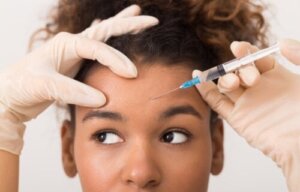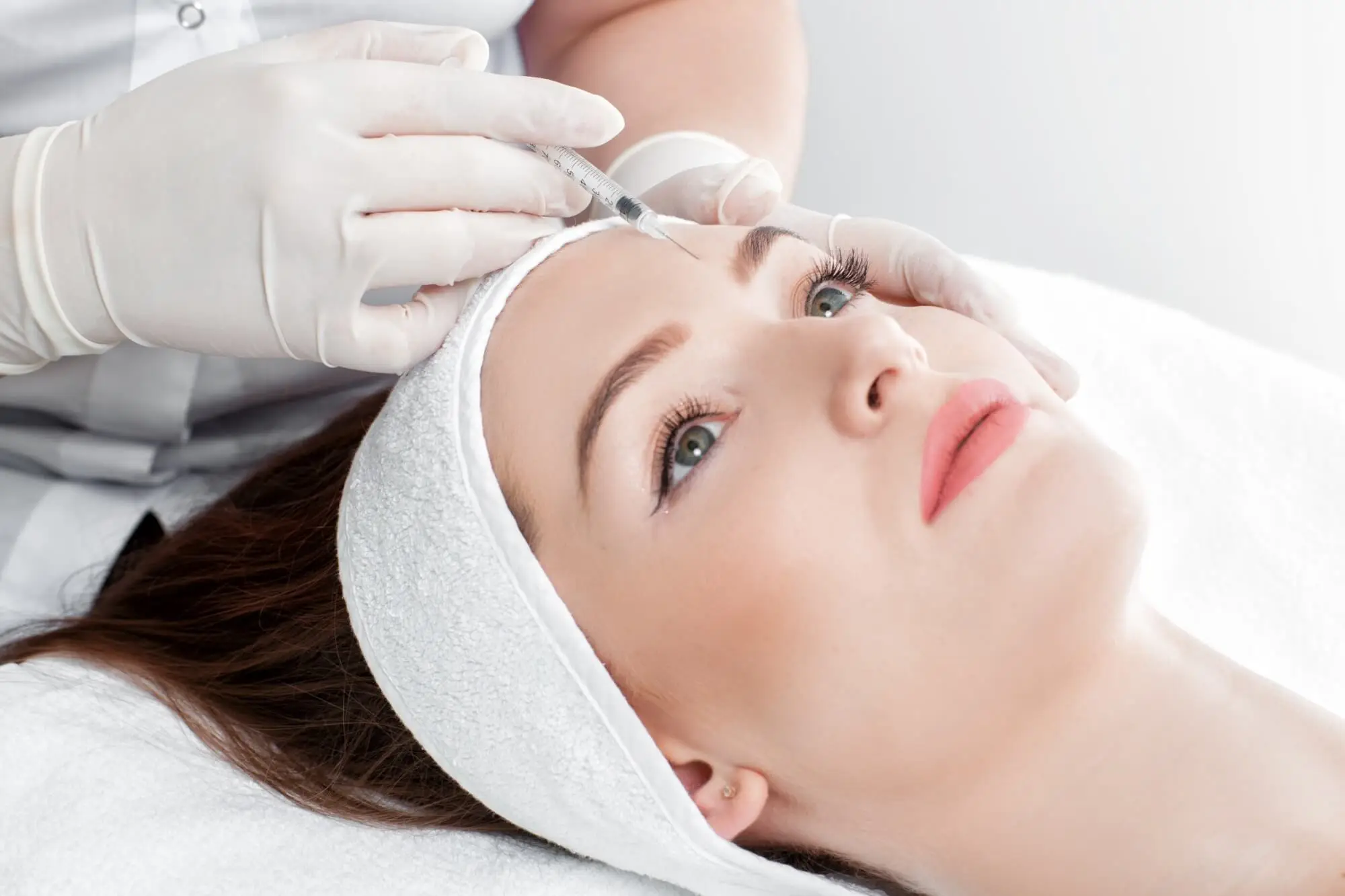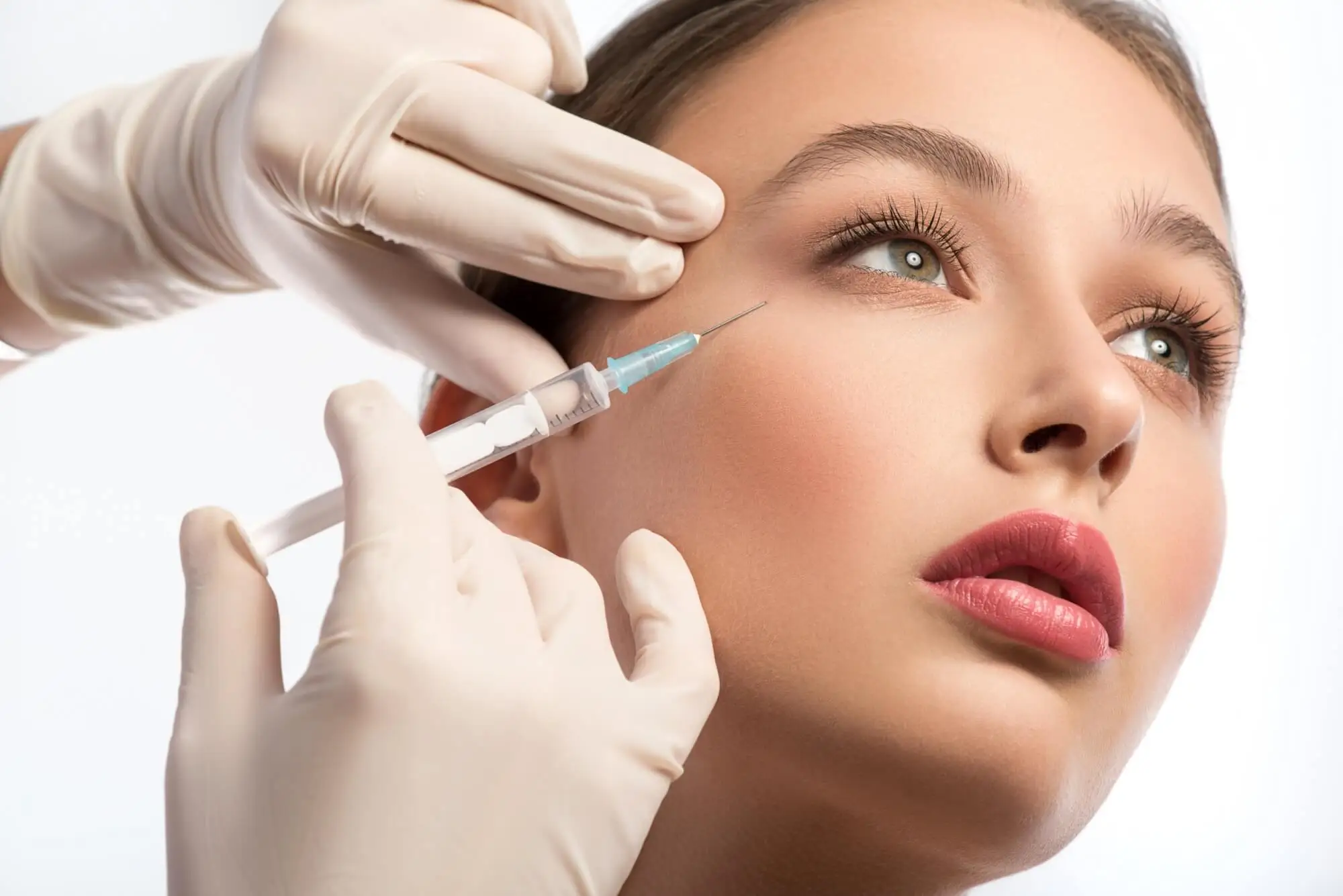"Baby Botox": What It Is, Benefits, and Risks


Reviewed and approved by the nurse Leidy Mora Molina
Baby Botox is an appropriate cosmetic procedure for those who wish to smooth expression lines without resorting to the intensity of Botox ®. Although both use botulinum toxin, the new technique is in demand by those who want a light and early introduction to the treatment.
Candidates for these injections are usually young people with incipient wrinkles who opt for the filler to hide noticeable creases. The method proposes a novel perspective on what botox normally is and has to do with the dosage of the substance – all in the search for natural results that help the look of our faces.
“Baby botox”: a technique to prevent the first wrinkles

The infiltration of small doses of botulinum toxin into the skin is known as baby botox. Unlike the normal application of Botox, the microinjections don’t focus on relaxing the muscle, but rather on weakening it to soften the appearance.
As the American Academy of Ophthalmology points out, the first signs of aging appear around the eyes, forehead, cheeks, and lips. The idea of minimizing these with botulinum toxin is to detract from the tiredness of the face or the appearance of increased age. The doses are also applicable in other susceptible areas, such as:
- The neck
- The neckline
- The forehead
- The jaw area
People from the age of 22 and into their 30s are the ones who most request this beauty treatment, aiming to stop superfine expression lines from becoming pronounced wrinkles. It can be understood as a corrective and preventive technique with subtle results.
Read more: 9 Tips to Lose Fat and Define Your Face
Benefits of “baby botox”
The International Society for Aesthetic Plastic Surgery reported in a survey that botulinum toxin treatments are on the rise, compared to the infiltration techniques of other fillers. Baby Botox contributes to these figures, thanks to its benefits.
In skin treated with baby Botox, a halt in the progression of expression lines is noted without “freezing” the face. Even if the furrows aren’t extremely pronounced, the doctor applies the substance according to each patient’s needs.
The method also uses a lower dose than conventional injections, due to the fact that the young musculature is less active. Among its advantages are that it doesn’t alter facial movement, it’s safe, and it’s cheaper.
In both men and women, Botox in short doses eliminates small wrinkles and prevents new ones from appearing.
How is “baby Botox” applied?

Botulinum toxin injections generally don’t cause pain; the science lies in the expertise of the person who applies it. The infiltration lasts less than half an hour and doesn’t require intense rest.
In the baby version, mini-doses are used in a single session. After 2 days of the filling with Botox, the change begins to be appreciated, while the final effect is evident after 15 days.
The result lasts for 4 months, a little less than in the conventional treatment, but this is due to the fact that this new trend uses less of the substance. In addition, when applied on young skin and muscles, a smaller dosage is favored.
Discover more: Tips to Reduce Under Eye Bags
Is there any risk in the application of preventive botulinum toxin?
As mentioned in an article in Actas Dermo-Sifiliográficas, in order to achieve natural results with botulinum toxin, a thorough knowledge of the anatomy and functionality of the facial muscles is essential.
Although preventive botulinum toxin is a discreet aesthetic treatment, the person performing the treatment simply must be skilled in the infiltration and handling of the substance. Certain adverse reactions are related to a bad technique being used, among others, we can mention the following:
- A crooked smile
- Uneven eyebrows
- Drooping eyelids
- Tearing or dry eyes
- Pain or swelling in the injection area
On the other hand, if the substance spreads in the body and the patient experiences persistent weakness, vision problems, or problems in swallowing and speaking, it’s important to consult a physician.
In this regard, the journal Cirugía Plástica Ibero-Latinoamericana points out that complications shouldn’t appear if the injections are performed carefully and if the patient is well selected. They point out that unrealistic expectations of results could trigger frustration and complexities for both the patient and the physician.
Who should not opt for Botox in any of its modalities?
Almost any person is a candidate for Botox injections, with the exceptions being those who have been diagnosed with pathologies that contraindicate the use of the substance. However, it isn’t a procedure that’s suitable for pregnant or breastfeeding women.
The U.S. Food and Drug Administration (FDA) doesn’t know how safe dermal fillers in soft tissues are if applied during pregnancy, breastfeeding, and in patients under 22 years of age.
All cited sources were thoroughly reviewed by our team to ensure their quality, reliability, currency, and validity. The bibliography of this article was considered reliable and of academic or scientific accuracy.
- Alcolea López J. Actualización sobre aplicaciones de la toxina botulínica en estética facial. Cirugía Plástica Ibero-Latinoamericana. Vol. 37. Núm. 1. pp. 81-90. España; 2011. https://scielo.isciii.es/pdf/cpil/v37n1/original12.pdf
- Boyd K. La toxina botulínica (Botox) para las arrugas faciales. Academia Americana de Oftalmología. Estados Unidos; 2022. https://www.aao.org/salud-ocular/tratamientos/la-toxina-botulinica-botox-para-las-arrugas-facial
- Encuesta Internacional Anual sobre Procedimientos Estéticos/Cosméticos. Sociedad Internacional de Cirugía Plástica Estética. Alemania; 2019. https://www.isaps.org/wp-content/uploads/2019/12/ISAPS-Global-Survey-2018-Press-Release-Spanish.pdf
- Martín Gorgojo A, Ruiz Rodríguez R. Diez errores a evitar en la inyección de toxina botulínica. Actas Dermo-Sifilográficas. Vol. 106. Núm. 6. pp. 458-464. España; 2015. https://www.actasdermo.org/es-diez-errores-evitar-inyeccion-toxina-articulo-S0001731015001696
- Rellenos dérmicos (rellenos de tejidos blandos). Administración de Alimentos y Medicamentos. Estados Unidos; 2021. https://www.fda.gov/medical-devices/aesthetic-cosmetic-devices/rellenos-dermicos-rellenos-de-tejidos-blandos
This text is provided for informational purposes only and does not replace consultation with a professional. If in doubt, consult your specialist.








